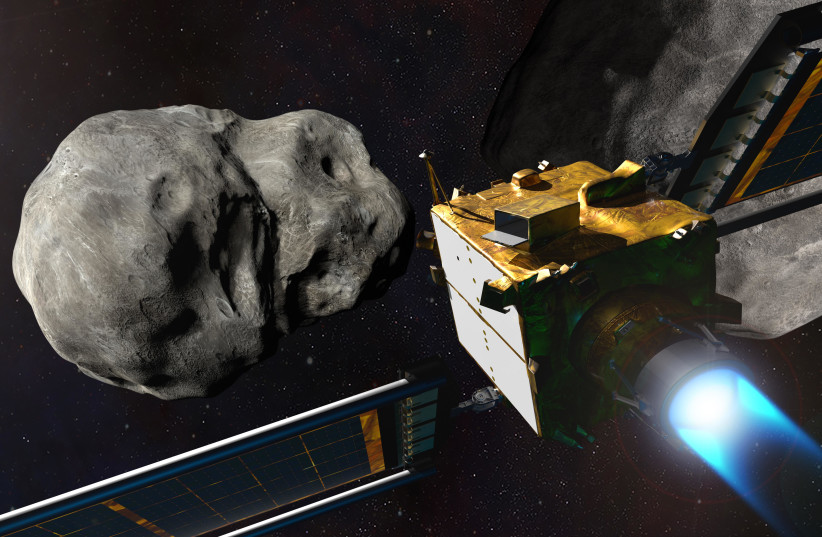An asteroid roughly the size of 14 flamingos flying foot-to-beak is set to skim past the Earth Wednesday, March 1, according to NASA's asteroid tracker.
The asteroid in question has been designated 2023 DJ1, according to the Center for Near-Earth Object Studies (CNEOS) at NASA's Jet Propulsion Laboratory (JPL).
The asteroid in question is small and is in no danger of hitting Earth.
Asteroid approaching Earth
Asteroid 2023 DJ1 is estimated by NASA to have a diameter of around 14 meters.
To put this size into perspective, flamingos, the pink and fabulous social birds, can grow to be as much as 1.4 meters in height. This means that asteroid 2023 DJ1 is around the size of 14 flamingos, flying foot-to-beat together.

And while we can't be certain, it is likely that the asteroid is heavier than 14 flamingos.
But what about speed? Does this asteroid live up to the speeds of a flamboyance of flamingos, soaring through the air?
Yes. NASA clocked asteroid 2023 DJ1's speed as being 6.22 kilometers per second, or 22,392 kilometers per hour. That's over 18 times the speed of sound.
Flamingos, as experts have pointed out, can't fly at the speed of sound. Rather, they can soar at a dignified speed of 60 kilometers per hour.
Is an asteroid going to hit Earth in 2023?
Flamingos are known for their beautiful pink color and thin legs, allowing them to pose and are often associated with flamboyance, fashion and color. They are not typically known for aggressive behavior – though they can sometimes lash out with violent jabs with their head.
But a flamingo peck is the closest we're going to get to being hit by asteroid 2023 DJ1, because NASA says it'll still shoot by us.
To explain, NASA calculated the asteroid's trajectory as being just over 1 million kilometers away from Earth. On a cosmic level, that's actually pretty close. But in practice, it's considerably farther away than the Moon, which is on average 384,000 kilometers away from Earth.
And even if the asteroid did strike the Earth, it wouldn't do much damage. Asteroids that small usually burn up in the atmosphere, or explode in the form of an airburst above the ground, making a loud noise at best but otherwise being harmless.
But asteroid impacts can still happen, even if they are less dangerous than a flamboyance of 14 flamingos.
After all, asteroids and meteors have hit the Earth recently.
Back in March 2022, a small asteroid around half the size of a giraffe known as 2022 EB5 hit the Earth just hours after its discovery. But given how small it was, it didn't result in any damage.
More recently, in late November 2022, tiny asteroid 2022 WJ1 harmlessly exploded into fragments that scattered around Lake Ontario. NASA had predicted that this small meter-long asteroid would impact this location and knew there wouldn't be any harm from it.
On February 13, 2023, asteroid 2023 CX1, twice the size of a Super Bowl trophy, impacted Earth near Normandy, France. This, too, caused no damage.
And most recently, just a few days after that, a meteor around the size of a Pembroke Welsh Corgi and the total weight of four baby elephants struck the Earth in Texas.

Do we have any way to stop an asteroid from hitting the Earth?
Scientists working in planetary defense are hard at work trying to devise ways of keeping the Earth safe from asteroids. Most notable among these is NASA's Double Asteroid Redirection Test (DART) Mission, which was launched to crash into the faraway asteroid Dimorphous in the Didymous system in order to see if its trajectory would be altered.
To put it simply, they punched an asteroid with a spacecraft to make it move, changing its orbital trajectory. And it worked.
And with scientists finding more ways to spot our many rocky neighbors in space – including an initiative to spot asteroids coming from the direction of the Sun, which are harder to spot due to the Sun's glare – more advances should keep coming.
